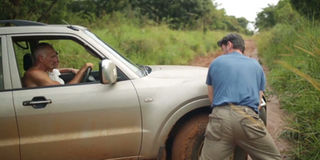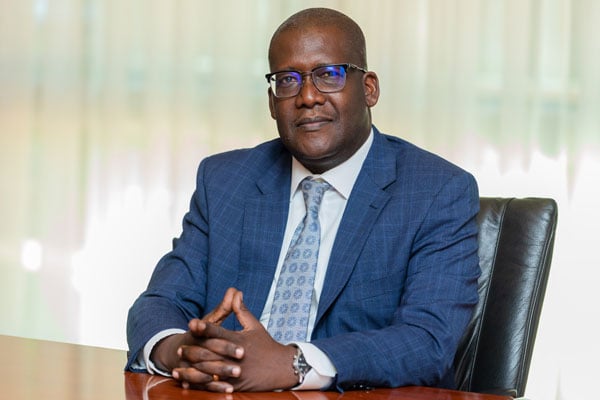It is high time government started feeding the tourism sector

There is need for government to work on the tourism infrastructure such as roads, air and marine transport. FILE PHOTO.
What you need to know:
Need for investment. With tourism becoming the country’s largest foreign exchange earner, there is need for government to invest wisely, especially in infrastructure such as roads, air and marine transport, Edward Balidawa.
Recently it was reported that a number of tourists had got stuck on the Muko-Rushaga road in the Bwindi National Park sector.
The downpour which had been experienced in the south western part of the country, it was reported, had rendered most feeder roads, particularly those leading to Mgahinga and Bwindi national parks, completely unmotorable.
This was at a time when Uganda’s park visitation seemed to have picked up for both foreign and local tourists. This is actually the time when visitors want to have a memorable trip to the giant apes of the mountains.
Many of us on social media sites with interest in tourism have over and over again been treated to pictures of stranded tourist on patchy roads that seem to be ending to nowhere.
Laughable
Ridiculously so, pictures of tourists carried on shoulders or improvised carriers crossing flooded roads, tend to appear laughable here but grossly funny and unserious to the rest of the world.
Vehicles stuck or wading through flooded or mushy roads in the Nkuringo and Ruhijja sectors leading to Bwindi, Kisoro and Mgahinga, are a regular site.
While the flooding at Tangi Gate in Murchison Falls National Park and frequent closure of the Sanga Gate into Lake Mburo National Park due to the poor state of the road has become a constant sight.
Government has over the years improved the state of a number of main roads leading out of Kampala, however, the challenge remains with feeder roads, especially those that lead to national protected areas such as national parks.
Making a case
At various levels of government and in numerous dialogues including the Presidential Initiative Round-table on Tourism, stakeholders have fervently tried to make a case for the tourism roads. However, so little has been done in the period.
The tourism sector has been found to have immense potential as a foreign exchange source and job creation, contributing 10 per cent of gross domestic product.
It must be emphasided that this performance is already happening, inspite of minimal attention given to the sector.
In the 2018/19 financial year, the tourism sector was allocated Shs.32.6. This is expected to be reduced to Shs.32.4b in the 2019/20 financial year.
This means, the tourism sector has the least allocation across board, which by the way is startling.
Government has on several occasions, seemed to recognise and appreciate the critical role that tourism plays both in contributing to gross national product and job creation.
What is however, still a paradox is why government is reluctant to feed the cash cow that brings pretty good amounts of dollars to the economy.
There has been more rhetoric than action and it is high time for government to prioritise the sector if it is to harvest its immense potential.
Government must, soon and not later, improve and upgrade tourism roads and other tourism support infrastructure.
No one needs to be reminded that we are in a very competitive global tourism ecosystem.
If reaching a prized tourism destination or a product such the mountain gorillas, is next to impossible, tourists will find alternatives.
Tourists have a very short window of tolerance, therefore, government needs to put this in mind.
Once this window is closed, it is hard to work yourself into their minds to regain it.
Inconveniencing
Tourists tend to have a particular schedule with which they have to stick, therefore, wasting their time and money because they have to manoeuvre their way to a tourist site is a total put off.
For instance, a tourist who had planned to spend only three days trekking gorillas but is held on the road for some 10 or even 24 hours, will undoubtedly become agitated because he might end up not reaching his destination or spending more money on unplanned charges.
In tourism, “experience” sells more than anything and if one has to sell a ruined journey, then it will be a bad job for any country.
Therefore, it is imperative that government works on the tourism infrastructure such roads, air transport and marine transport.
Transport diversification
There is no reason why we should largely depend on only road transport which is not costly but unsafe and time consuming.
For instance, a journey from Entebbe airport to Kisoro takes approximately 11 hours.
This configuration alone makes it impossible for any tour operator to package and sell any gorilla trekking package of less than three days.
In an environment where there are numerous alternatives and competing destinations, the benefits accrued from this strategy may not be sustainable in the long run.
Therefore, if Uganda needs to position its tourism, we must adopt a tourism infrastructure mix.
This should enable us utilise efficiently our aerodromes spread across the country and reconstruct the water piers on lakes to enable the tourism sector leverage on the vast navigable water bodies in the country.
Where will the money come from?
I am certain that the immediate issue that jumps out of the above submission I have labored to make is about money. Where will the funds to do the tourism roads, the aerodromes and the water piers come from?
I am aware that the usual constant denominator in our case is the insufficient resource envelope.
It is also obvious that we might never have enough to go around equitably, but the issue is how we meticulously allocate the resources available.
We don’t need a divine prophet to teach us how it is critical to put our investment to those areas or sectors from which we can get maximum returns.
What is probably needed today in order to break this unmatched priorities with resource allocation is to carry out a scientific evaluation of all the sectors as listed in the budget allocation schedule.
While using a cost-benefit analysis approach, we can get to know which sectors is giving the Ugandan people efficiency gains, value for money and desired results.
I believe that in carrying out this exercise, the Executive and the wananchi will be able to immediately and without any acrimony form an inevitable consensus on which priority sectors to spend on our resources and in which measure.
I am sure that if this national scientific cost-benefit analysis is carried out, it won’t then be very difficult for the executive to realise that there is an urgent need to drastically reduce on our Public Administration expenditure.
This reduction would create savings which can be channeled into feeding the cows that can grow our economy. Furthermore, it won’t be that hard for the Executive to be convinced and also to convince our Legislators that there is a need to reduce on the size of Parliament, on the number of districts, on the number of Constituencies and all others organs of public administration to which government must spend large sums of money.
I believe that, with a well-balanced rationalization of the public administration sector, the country can still continue to enjoy good but improved public and social service delivery which will go a long way in reinforcing the investments made in improved tourism infrastructure for social economic transformation.
It is just no longer attainable to continue boasting of a large Parliament, many Districts and a large number of public administration centers while we let the milk-giving cows continue to be starved.
Again, I don’t think that we need a heavenly prophet to come down and tell us of the disastrous effects of continuing on such a trajectory. We must change course, and we must change now.




